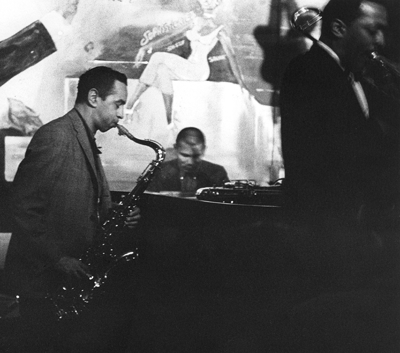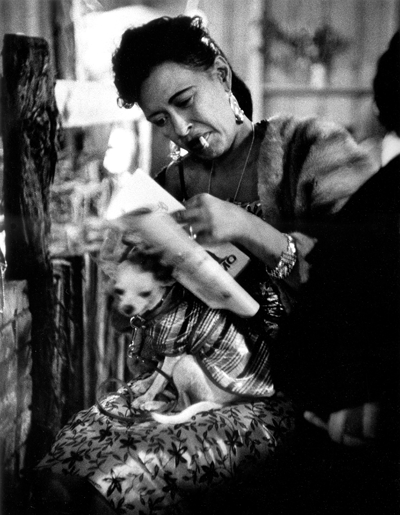FIRST PERSON | Rochelle Metcalfe
I arrived in San Francisco in January 1959, married, took up residency on Steiner Street between McAllister and Golden Gate, a block off of famous Fillmore Street, then a lively center for African-Americans. Black-owned businesses thrived, entertainment bustled — nightclubs, dance halls, theaters, a bowling alley, skating rink, you name it.
I always loved the nightlife — music and dance. I came to town during the waning days of an era, but experienced many hot spots, including Charles Sullivan’s Fillmore Auditorium, where I saw soul man James Brown, Aretha Franklin and Lil’ Willie “Grits Ain’t Groceries” John.
Foot pattin’ to funky organ grinder Richard “Groove” Holmes at Jack’s on Sutter Street, a block off Fillmore — the great late Saunders King performed there. Jack’s was forced to move and ended up at the corner of Fillmore and Geary — now the Boom Boom Room — where I caught a few 6 a.m. breakfast jams. I was mesmerized by lean Jimmy Ed, who could fire up the organ and run Jimmy Smith off the stage. Jack’s was the last club of the Fillmore jazz era to close, in May 1988 due to tax problems.
The most famous nightery was Jimbo’s Bop City — the hot after hours jazz spot at 1690 Post Street and Buchanan, now part of Japantown — owned by savvy Jimbo Edwards. It was noted for good soul food and music that featured top flight jazz musicians who played downtown, across Van Ness — the dividing line — in segregated clubs that barred blacks.
Whites came uptown to hang out in black joints — the likes of columnist Herb Caen and his white friends. Would you believe this lasted until the late 50s? Literally it was jazz in the garage — a former shoeshine stand run by Edwards converted into a small club. Artists like Charlie Parker, Lady Day, Dinah Washington and Miles enjoyed a pork chop sandwich, climbed on the bandstand and blew purer than he did for white audiences, by then feeling the flow.
The place would be packed, folks having a good time in the small smoked-filled room — the boss himself, Jimbo Edwards, the mayor of Post Street, in derby hat, business suit and tie, moving about greeting after-hour revelers. Bop City opened in the late 40s, and it was a sad day when the doors closed in 1965 to make way for demolition.
But the building would be saved. Community activist Essie Collins petitioned the Redevelopment Agency to move the three-story building intact around the corner to 1712 Fillmore, where it became a branch of Marcus Books, established in Oakland in 1960 by noted scholars and community activists Drs. Ray and Julian Richardson.
The Blue Mirror attracted my attention on Monday nights to hear pianist and vocalist Earl Grant — he’d fly or drive up from L.A. — and baaaad organist Peter Rabbitt starred. The beautiful high yella fabulous Sepia Queen Leola King — a smart business woman — owned the club with her handsome husband, shrewd Dewey Wilson, who looked like a white man. He has passed on, but the legendary lady is still with us. Nowadays she holds court at the coffee house on the corner of Fillmore and Eddy.
The Queen may have lost the most due to redevelopment in the Western Addition — the Blue Mirror gone and their barbecue business on Geary torn down to make way for Cathedral Hill apartments. Like others, she received a voucher — a promise of a return to the area to rebuild. Many could not afford to wait 10 years or more. A survivor, Leola King could. She had the fight and the money to hang on, but still did not get a piece of the action in the new Fillmore.
She dreamed of reopening the Blue Mirror. She was angry when she heard the name would be used for a restaurant in the new Jazz Heritage Center without her permission or consultation and threatened a lawsuit. The owners didn’t want the controversy, and the restaurant is now called 1300 on Fillmore.
Across the street from the Blue Mirror was the Manor Plaza Hotel, at 930 Fillmore, featuring a nightclub downstairs operated by Willie McCoy, and where comedian Flip Wilson, after he was discharged from Hamilton Air Force base in Novato, gigged as a doorman before he got his start in Hollywood. Headliners included Dinah Washington and Ike and Tina Turner. Savvy businessman Warren Stewart, a part owner, lived to see the changes in da ’Mo. Warren had a soda fountain on Steiner within Rector’s Chicken Shack.
There were many famous black-owned spots along Post Street — the Champagne Supper Club, operated by Curtis Mosley and the late Ernest Dewson long before he and the hat lady hooked up. Mrs. Ruth Garland Dewson of Paris, Texas, came to San Francisco in 1967 and has made herself famous selling hats on upper Fillmore.
One of the first spots my ex and I would frequent was Wesley Johnson’s Texas Playhouse, popular with regulars and military personnel. Johnson was a showman — he would drag an overflowing cotton sack, always dressed sharp, with a Texas 10-gallon hat. The first club DJ would spin those down home blues — B. B. King, Bobbie “Blue” Bland, other soul touching personalities of the day. My eyes dazzled over the bar counter — it was laden with silver dollar coins.
The Booker T. Washington Hotel and cocktail lounge was hot, located on Ellis Street between Fillmore and Webster. Who’s who in the entertainment field stayed there — singer O.C. Smith (“Lil’ Green Apples”), Brook Benton performed.
The grand opening of Yoshi’s San Francisco begins an exciting new era. I look forward to hearing some great jazz even though I know much of traditional jazz has passed and now mixes with world music. But it’s still sad, because I remember the bulldozers that destroyed a community and displaced black families, holding nothing but vouchers of promise to return. For most, the opportunity never came.
Rochelle Metcalfe has covered nightlife in the Fillmore for decades. Her column, “I Heard That,” is posted on Wednesdays at beyondchron.org.










